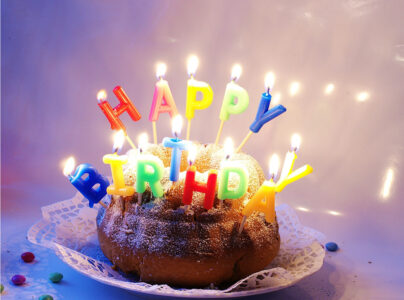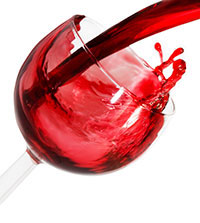Ten years: time to celebrate Inspire article
To mark the 10th anniversary of the journal, we are hosting a virtual party. Join in by using some of our articles to teach science with a festive twist.

gänseblümchen; image source:
Pixelio
The first issue of Science in School was published in March 2006 and the journal has been going strong ever since – now that is something to celebrate! In one of several articles looking back over the past 10 years, we are putting together a party using material from the Science in School archive.
Getting ready
Everyone likes to dress up for a party, perhaps also spraying on some perfume or aftershave. But what are these scents? In 2007, Angelika Börsch-Haubold explained how to teach the organic chemistry of natural scents and how the fine-tuning of our receptor machinery allows us to distinguish between chemically similar molecules. As she explained, many fragrances are derived from plants, and plant products can be used to demonstrate how small changes in the chemical structure of an odorant give rise to either completely different or at least distinguishable smells.
Today, the perfume industry is big business and most commercial perfumes are alcohol-based. In Roman times, however, perfumes for the skin took the form of unguents, or greasy ointments. With Gianluca Farusi’s help, you can take your students 2000 years into the past, recreating and testing Julius Caesar’s perfume. In his 2011 article, Gianluca explains the methods that the Romans used to extract scent from flowers, seeds, leaves, bark and other fragrant plant material. As part of a larger interdisciplinary chemistry project, his students (aged 14-15) then recreated the favourite perfume of Julius Caesar, and the recipe is included in the article. Would this be something you’d like to wear to the party?
The food
Of course a party needs food, from nibbles to a full sit-down meal. In 2015, we explored the work of Charles Spence in the UK, who investigates how the other senses can change the taste of food. It seems that what we enjoy depends not only on our taste buds but also on other stimuli. For example, potato crisps taste better when they sound crunchier. The music playing at the party can also change taste perception: “It seems we associate higher notes, such as a tinkling piano, with sweetness,” he said, “and deeper, more resonant tones with bitterness.”
So psychology is teaching us how to make food sweeter without changing its ingredients. One of the key sweet offerings at any birthday party is the birthday cake. For an impressive show you might like to make a fluorescent icing for your cake using tonic water: the quinine in the tonic water causes it to glow under UV light. The American Chemical Society has a website that explores the chemistry of baking cookies, bread, pie, and cake, and investigates the science behind the ingredients in your cupboard.
A key ingredient of most cakes is eggs. If you have some eggs remaining after your baking, David Featonby has many science activities that are possible with a humble hen’s egg. And if you have any birthday candles left over after putting many on the cake, why not read Michael Faraday’s Chemical History of the Candle, with more ideas for classroom demonstrations.
Raising a toast
To get the party going, Dean Madden and John Schollar from the National Centre for Biotechnology Education at the University of Reading, UK, suggest a recipe for a cocktail containing deoxyribose nucleic acid (DNA). This drink has novel features of considerable biological interest but is purely for the adults.

image source: Flickr
During the meal, you might instead like some wine. European countries produce more than half of the world’s wine – and drink a lot of it too! These hands-on activities for schools reveal the science behind the perfect wine, as students aged 15-18 become vintners for a day, using analytical techniques to explore the changes that take place during the winemaking process.
Meanwhile, Lucy Attwood from Oxford Danfysik, UK, explains the mysterious appeal of champagne, the sparkling wine that people have celebrated with since the 17th century. As Lucy explains, the carbon dioxide formed by fermentation remains dissolved in the wine until the cork is popped and the pressure is released. Nucleation points – scratches on the glass or dust particles – prompt carbon dioxide molecules to come out of solution and create bubbles, which then rise to the surface.
Of course, to really show off, you could open the champagne with a sabre. The combination of the pressure of the champagne inside the bottle and the material structure of glass where the lip of the bottle meets the neck means that if a small crack is introduced with a knife or sabre to the glass, the top of the bottle will fly off.
For a non-alcoholic fizzy drink, you could try brewing spicy ginger beer – and thus introduce the principles of fermentation, food hygiene and the biochemistry of respiration to younger students.
And to chill the drinks, we can use a salt and ice bath. Just as putting salt on roads prevents ice from appearing, salt and ice will cool drinks as salt depresses the freezing point of water.
Finishing the evening with a bang
What better way to finish a celebration than with fireworks? The colours and chemistry of fireworks can lead to some useful lessons, and there are some other fun firework activities that can be done in the classroom or at home. However, fireworks can cause measurable air pollution. In their article, Tim Harrison and Dudley Shallcross from Bristol University, UK, explain how to investigate these atmospheric pollutants in class, using publicly available air-quality databases.
Thank you again for coming to our party. We hope you found something useful and inspiring. Don’t hesitate to write up any of your own activities for the journal – after all, we need articles for the next 10 years!





